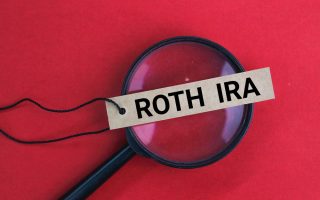You may have heard about the movement to automatically opt employees into their 401K’s. Right now, the default option is for you not to contribute. When you’re hired they ask you if you’d like to contribute and how much. If you say no, then nothing is taken out of your check. There is a movement afoot to make opting in the default option instead. When you’re hired you would automatically have three percent (more or less depending on the employer’s plan) deducted from your check and placed into a retirement plan/fund of your employer’s choosing. You would have to specifically tell your employer not to do this in order not to contribute to the plan.
The thinking is that if the default option is to be enrolled in the plan then more people will save because, frankly, we’re all too lazy to be bothered with filling out the paperwork to stop the withdrawals. This is partly why more people don’t currently contribute to retirement plans. They’re too lazy or busy to be bothered with filling out the paperwork to join and researching the options for their contributions. So, the thinking goes, if you automatically enroll people into the retirement plan, they will be saving something and probably won’t opt to change it.
The goal of this plan is to get people to save something for their retirement. The government wants us to save more because retirees with no money will soon overburden Social Security and Medicare. People need to start taking responsibility for their own retirements. Since people have shown time and time again that they won’t contribute voluntarily, the government wants to try to sneak it up on us.
I don’t disagree with the plan. I wish more people would step up and take care of their own retirement planning. I’m not looking forward to supporting others in my old age. I will have saved enough to take care of myself, but I will likely be penalized in higher taxes and reduced Social Security payments to take care of those who did not take responsibility. However, I wonder if the plan will really help all that much.
Sure, it’s great that people will be saving something. And they probably won’t really miss the money because three percent taken out of your paycheck before taxes really isn’t that much. If your gross pay is $2000 every two weeks, for example, then three percent of that is only $60, or $10 per month. That shouldn’t present a problem for most people. And therein lies the problem. The contributions that will be automatically deducted are not nearly enough to create a secure retirement on their own. Obviously the idea is that the employee will opt to contribute even more or to open some other retirement account like a Roth IRA on their own. Yet if people won’t even voluntarily sign up for retirement plans, what makes anyone think they will voluntarily opt to have even more deducted from their checks? I think the odds of most people exceeding the default deduction are pretty slim.
The other goal of this plan is to teach people to save. The idea is that if you show people savings in action they will be inspired to save more. If you show them how a 401K adds up they will want to do more. I don’t think this will work, either. Most people know how saving works. You don’t need much more than an elementary school education to understand interest and compounding. When you start a job you are usually given information on the retirement plan that includes all kinds of charts showing how your contributions add up. People ooh and ahh over those charts during orientation, but still don’t sign up. For all that they understand, people still don’t want to save. You can’t force people to save money. Sure, you can take a nominal amount of their check but you can’t make a non-saver get excited about doing more. Sadly, many people only learn how to save once the crisis comes. Forcing people into a 401K isn’t going to turn them into savers or teach them how to save for the long term.
I worry that these plans will have the opposite effect. Instead of getting people to save more, I worry that this default contribution scheme will increase complacency amongst people and actually lower their desire to save. People will start to think, “I’m saving for retirement through my employer. I don’t have to do more.” They’ll lose any desire they may have had to save more because they will assume it’s being taken care of by those default deductions. Even if you explain that they need to do more, many will assume that what is being done is enough. If people are so complacent when they aren’t saving at all that they think retirement will magically take care of itself, why would anyone think that they would not become even more complacent and guilty of magical thinking once a little money is actually being put away?
When people who’ve been “tricked” into these contributions retire they will have some money saved and that is better than nothing, but it won’t be nearly enough to accomplish the governments’ goal of reducing the burden on entitlement programs. It won’t be enough to make them independent in retirement. I don’t think many of them will have learned to save on their own. I’m afraid that this plan might actually make the saving situation worse in this country. People will assume that it’s taken care of and not bother to save more, to learn about investing, or to take responsibility for their own situation. If they won’t do it when no contributions are being made, why would they do it once some contributions are being made by default? So what do you think? Will automatic contributions help or hurt the long term retirement prospects in this country?

Jennifer Derrick is a freelance writer, novelist and children’s book author. When she’s not writing Jennifer enjoys running marathons, playing tennis, boardgames and reading pretty much everything she can get her hands on. You can learn more about Jennifer at: https://jenniferderrick.com/.






Comments